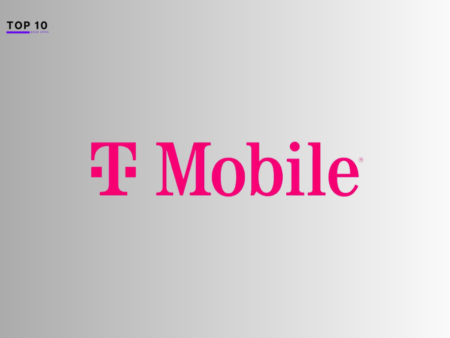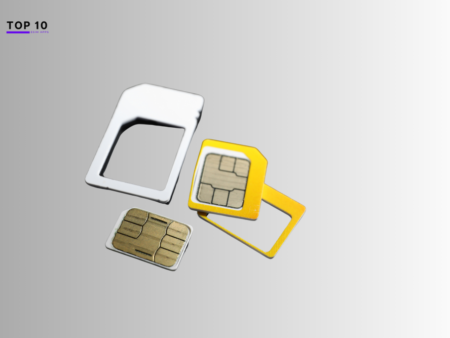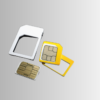As technology continues to advance, so do the ways in which we connect and communicate. One such innovation is the eSIM, or embedded SIM. But what exactly is an eSIM, and how does it work? In this article, I will delve into the intricacies of eSIM technology and shed light on its functionality, particularly in relation to the iPhone.
An eSIM, also known as a digital SIM, is a virtual SIM card that eliminates the need for a physical SIM. With an eSIM, users can store multiple carrier profiles on their device and easily switch between them. Whether you’re a frequent traveler or simply someone who desires greater flexibility with their cellular plan, the eSIM offers convenience and versatility.
Setting up an eSIM is a straightforward process. It involves either scanning a QR code or downloading an eSIM profile from your carrier. Once configured through software, the eSIM can be installed on various devices, including iPhones. This technology has revolutionized the way we connect and communicate, making it easier than ever to switch between carriers and activate multiple phone numbers and data plans on a single device.
Key Takeaways:
- The eSIM is a digital SIM card that eliminates the need for a physical SIM.
- Users can store multiple carrier profiles on their device and easily switch between them.
- The eSIM is configured through software and can be installed on various devices, including iPhones.
- Activating an eSIM involves scanning a QR code or downloading an eSIM profile from the carrier.
- eSIM technology offers convenience and flexibility, especially for travelers and those who want to switch to local operators when abroad.
What is eSIM and how does it differ from physical SIM cards?
An eSIM, also known as an embedded SIM, is a digital alternative to the traditional physical SIM card. While physical SIM cards are physical chips that need to be inserted into a device, eSIMs are built into the device’s hardware and can be programmed through software.
Unlike physical SIM cards, eSIMs do not require users to physically change the SIM card when switching carriers or activating a new plan. Instead, users can simply activate cellular plans and switch between carriers digitally, without the need for physical swapping.
Although eSIMs offer the same functionalities as physical SIM cards, such as connecting to a cellular network and accessing voice and data services, they provide greater flexibility and convenience. With eSIM, users can easily switch between carriers and manage multiple cellular plans on a single device, making it ideal for frequent travelers or individuals who need multiple phone numbers on a single device.
eSIMs offer the same functionalities as physical SIM cards, such as connecting to a cellular network and accessing voice and data services. However, they provide more flexibility and convenience, particularly for users who frequently switch between carriers or travel internationally.
eSIM vs Physical SIM: A Comparison
| eSIM | Physical SIM | |
|---|---|---|
| Form | Virtual or digital SIM | Physical chip |
| Activation | Through software | Physical insertion |
| Flexibility | Easy switching between carriers and plans | Requires physical swapping |
| Device Compatibility | Supported by newer devices | Supported by older and newer devices |
Table: A comparison between eSIM and physical SIM cards.
The table above highlights the key differences between eSIM and physical SIM cards. While physical SIM cards require physical insertion and swapping, eSIMs can be activated and managed digitally through software. Additionally, eSIMs offer greater flexibility in terms of switching between carriers and plans.
Setting up an eSIM on iPhone
Activating an eSIM on an iPhone is a simple process that can be done during the initial device setup. There are several methods to activate an eSIM, depending on the carrier and device compatibility. Some carriers support eSIM Carrier Activation, where the eSIM is assigned to the iPhone upon purchase. This means that users don’t need to contact the carrier to activate the eSIM. Others offer eSIM Quick Transfer, which allows users to transfer the eSIM from their previous iPhone to the new one without any hassle.
If these options are not available, users can still activate their eSIM by contacting their carrier. The carrier will provide a QR code that can be scanned using the iPhone’s camera or an eSIM profile that can be downloaded from their website or app. Once the QR code is scanned or the profile is downloaded, users can follow the onscreen instructions to complete the activation process. It’s important to note that the setup process may vary slightly depending on the carrier and device model.
Additional Steps for eSIM
If you want to add or transfer an eSIM to your iPhone after the initial setup, the same methods can be used. Simply contact your carrier and request a QR code or eSIM profile. The eSIM can be easily added by scanning the QR code or downloading the profile, and following the onscreen instructions. This convenient process allows users to switch between carriers and activate different cellular plans on their iPhone without the need to physically change SIM cards.
It’s important to note that not all carriers support eSIM on iPhone, so it’s recommended to check with your specific carrier before attempting to activate an eSIM. Additionally, ensure that your iPhone model supports eSIM functionality. The setup process for eSIM on iPhone provides users with flexibility and convenience, making it easier than ever to switch carriers and manage multiple phone numbers and data plans on a single device.
Benefits and Drawbacks of eSIM
eSIM technology offers several benefits that enhance convenience and flexibility for users. With eSIM, users can easily switch between carriers and activate multiple cellular plans on their device without the need for physically changing SIM cards. This eliminates the hassle of carrying and swapping physical SIM cards, making the process of changing plans or carriers much more seamless. Furthermore, eSIM allows users to have multiple phone numbers and data plans on their device simultaneously, which is particularly useful for individuals who need separate personal and business lines or for frequent travelers who want to switch to local operators when abroad.
“eSIM technology offers convenience and flexibility by allowing users to switch between carriers and activate multiple cellular plans on their device without physically changing SIM cards.”
However, it’s important to consider some drawbacks of eSIM. While compatibility has significantly improved over the years, eSIM is not universally supported by all carriers and devices. Some older devices may not have eSIM capabilities, and not all carriers offer eSIM support. This could restrict users’ options in terms of device choice and carrier selection. Additionally, eSIMs may have limited availability in certain regions, which could hinder users’ ability to access eSIM services. It’s crucial for users to check carrier and device compatibility before making the switch to eSIM to ensure a smooth and seamless experience.
“While eSIM offers convenience, it’s important to consider compatibility limitations in terms of device availability and carrier support.”
| Benefits of eSIM | Drawbacks of eSIM |
|---|---|
| Convenience: Switch between carriers without physically changing SIM cards. | Compatibility: Not all devices and carriers support eSIM. |
| Flexibility: Activate multiple cellular plans on a single device. | Availability: eSIM may have limited availability in certain regions. |
Devices that support eSIM
eSIM functionality is available in various devices, including smartphones, smartwatches, tablets, and laptops. High-profile smartphone manufacturers such as Apple, Google, and Samsung have incorporated eSIM support in their devices. The latest iPhone models, as well as Google Pixel and Samsung Galaxy devices, have eSIM capabilities. Smartwatches with cellular capabilities, such as the Apple Watch and Samsung Galaxy Watch, also use eSIM for connectivity. Additionally, certain tablets and laptops, such as the Samsung Galaxy Book Go and Microsoft Surface Pro X, support eSIM.
| Device | eSIM Support |
|---|---|
| iPhone 13 | Yes |
| Google Pixel 6 | Yes |
| Samsung Galaxy S21 | Yes |
| Apple Watch Series 7 | Yes |
| Samsung Galaxy Watch 4 | Yes |
| Samsung Galaxy Book Go | Yes |
| Microsoft Surface Pro X | Yes |
As eSIM technology continues to evolve and gain popularity, more devices are expected to offer eSIM support. This provides users with more options and flexibility when it comes to choosing devices that align with their preferences and needs. Whether it’s a smartphone, smartwatch, tablet, or laptop, eSIM compatibility allows users to easily activate and switch between cellular plans without the hassle of physical SIM card swaps.
The table above showcases a few examples of devices that support eSIM. It’s important to note that this is not an exhaustive list, as the availability of eSIM support may vary depending on the device model and region. When considering a new device, it’s advisable to check the manufacturer’s specifications or contact the retailer for confirmation of eSIM support.
Activating an eSIM on Android and iOS
Activating an eSIM on both Android and iOS devices is a relatively simple process. For Android devices, users need to enter the Settings app, navigate to the Connections or Network & Internet section, select Mobile Network or SIM Card, and then add the mobile plan or download the SIM card by scanning the provided QR code.
On iOS devices, users can open the Camera app, scan the QR code, tap on the Cellular Plan Detected notification, and follow the onscreen instructions to complete the activation. The exact steps may vary slightly depending on the device and version of the operating system.
To activate an eSIM on Android, follow these steps:
- Open the Settings app on your Android device.
- Navigate to the Connections or Network & Internet section.
- Select the Mobile Network or SIM Card option.
- Add the mobile plan or download the SIM card by scanning the provided QR code.
- Follow the onscreen instructions to complete the activation.
To activate an eSIM on iOS, follow these steps:
- Open the Camera app on your iPhone.
- Scan the QR code provided by your carrier.
- Tap on the Cellular Plan Detected notification.
- Follow the onscreen instructions to complete the activation.
By following these simple steps, users can easily activate an eSIM on their Android or iOS devices and enjoy the convenience and flexibility it offers.
Carriers that support eSIM
As eSIM technology continues to gain popularity, numerous carriers worldwide have embraced this innovation and offer eSIM services. These carriers provide the necessary support and infrastructure to enable users to activate and use eSIM on their devices. Some of the prominent carriers that support eSIM include:
- AT&T: One of the leading carriers in the United States, AT&T offers eSIM support for compatible devices. Customers can enjoy the convenience and flexibility of eSIM technology with AT&T’s cellular plans.
- T-Mobile: Known for its extensive network coverage, T-Mobile also offers eSIM support. Customers can easily activate their eSIMs on T-Mobile’s network and benefit from their range of services.
- Verizon: Another major carrier in the United States, Verizon has embraced eSIM technology. Users can activate their eSIMs on Verizon’s network and enjoy seamless connectivity.
- Vodafone: As a global telecommunications company, Vodafone provides eSIM support across various countries. Users can check their region’s availability and activate eSIM on Vodafone’s network for convenient connectivity.
- Orange: With a strong presence in Europe, Orange offers eSIM support to its customers. Users can activate their eSIMs on Orange’s network and enjoy the benefits of this cutting-edge technology.
These carriers are just a few examples of those that have recognized the potential of eSIM technology and have adapted their services accordingly. It’s important for users to check with their specific carrier to ensure eSIM compatibility and availability in their region. Carriers typically provide detailed instructions on their websites, dedicated apps, or physical stores, guiding users through the eSIM activation process.
By embracing eSIM technology, carriers are enabling users to experience the benefits of this digital SIM solution. With the support of these carriers, users can enjoy the convenience, flexibility, and seamless connectivity that eSIM offers on their devices.
Table: eSIM-supported carriers
| Carrier | Country/Region |
|---|---|
| AT&T | United States |
| T-Mobile | United States |
| Verizon | United States |
| Vodafone | Multiple countries |
| Orange | Multiple countries |
eSIM vs Physical SIM Card: A Comparison
The introduction of eSIM technology has revolutionized the way we connect to cellular networks. In this section, I will compare eSIMs with traditional physical SIM cards to highlight the key differences between the two. Let’s explore how eSIMs, also known as virtual or digital SIM cards, offer a more flexible and convenient alternative to their physical counterparts.
One of the primary distinctions between eSIMs and physical SIM cards lies in their form and size. Physical SIM cards come in different sizes, such as standard, micro, and nano, and need to be inserted into a compatible device. On the other hand, eSIMs are built directly into the device’s hardware and don’t require a physical card. This compact design allows for more space in the device’s construction, potentially leading to sleeker and more compact devices.
Flexibility is another notable advantage of eSIM technology. With a physical SIM card, users often need to swap out cards when switching between carriers or activating different plans. This process can be cumbersome and inconvenient. However, eSIMs eliminate the need for physical swapping. Users can easily switch between carriers and activate multiple plans on a single device without the hassle of changing SIM cards. This convenience makes eSIMs particularly appealing for frequent travelers or individuals who frequently switch between carriers.
“The compact design and flexibility of eSIMs make them a game-changer in the world of cellular connectivity.”
While eSIMs offer numerous benefits, it’s essential to consider device and carrier compatibility. Not all devices support eSIM technology, especially older models. Similarly, not all carriers have adopted eSIM support, although its availability is steadily increasing. It’s crucial for users to verify their device’s compatibility and check with their carrier to ensure eSIM support. By doing so, users can take full advantage of the benefits that eSIM technology has to offer.
| eSIM | Physical SIM Card | |
|---|---|---|
| Form | Digital | Physical chip |
| Size | Compact, built into the device | Various sizes: standard, micro, nano |
| Flexibility | Switch between carriers and activate multiple plans without physical swapping | Physical swapping required to switch carriers or activate different plans |
The future of SIM cards: eSIM and sustainability
As technology continues to advance, it is important to consider the environmental impact of our devices and the accessories they require. One area that has caught the attention of sustainability advocates is the use of traditional physical SIM cards. These small chips, made of mixed materials, generate a significant amount of plastic waste when they are discarded and often end up in landfills. Additionally, the production and distribution of physical SIM cards contribute to carbon dioxide (CO2) emissions.
Enter eSIM, a digital alternative that offers a more sustainable solution for cellular connectivity. Unlike physical SIM cards, eSIMs are built into the device’s hardware and do not require separate plastic cards. This reduces the production of plastic waste associated with traditional SIM cards and helps minimize the environmental impact. By eliminating the need for physical SIM cards, eSIM technology also reduces the carbon footprint associated with their production, distribution, and disposal.
Another aspect of sustainability related to eSIM technology is the opportunity for device recycling. As eSIMs become more prevalent, the ease of transferring cellular plans digitally means that devices can be easily passed on or recycled without the need to extract and dispose of physical SIM cards. This streamlines the recycling process and encourages a more circular approach to device usage.
The environmental benefits of eSIM:
- Reduces plastic waste generated by traditional physical SIM cards
- Minimizes carbon dioxide emissions associated with SIM card production and distribution
- Facilitates device recycling by eliminating the need for physical SIM card extraction
In conclusion, eSIM technology presents a more sustainable future for SIM cards and cellular connectivity. By eliminating the need for physical SIM cards, eSIMs help reduce plastic waste and carbon dioxide emissions. As more devices become compatible with eSIM technology and more carriers offer eSIM support, we can expect to see a significant shift towards a more environmentally friendly approach to cellular connectivity.
Conclusion
In conclusion, eSIM technology offers users a revolutionary way to manage their cellular connectivity. With eSIM, the traditional physical SIM card is replaced by a digital SIM that is embedded in the device’s hardware. This provides users with convenience and flexibility, as they can easily switch between carriers and activate multiple plans without the need to physically change the SIM card.
The digital nature of eSIM also allows for quick and seamless setup. Users can activate their eSIM by simply scanning a QR code or downloading an eSIM profile from their carrier. This eliminates the hassle of visiting a physical store or waiting for a physical SIM card to arrive in the mail.
Furthermore, eSIM technology has the potential to contribute to sustainability efforts. By reducing the production and disposal of physical SIM cards, eSIM helps to reduce plastic waste and the associated environmental impact. This aligns with the growing emphasis on sustainability in the technology industry.
As eSIM support continues to expand and more devices become compatible, it is clear that eSIM technology is shaping the future of SIM cards. The convenience, flexibility, and environmental benefits make eSIM a promising solution for managing cellular connectivity. It is likely that eSIM will become the standard in the coming years, offering users an enhanced experience and paving the way for a more sustainable future.
FAQ
How does eSIM work?
eSIM, or embedded SIM, is a digital SIM card that can be activated without the need for a physical SIM. It allows users to store multiple carrier profiles on their device and easily switch between them.
What is the difference between eSIM and physical SIM cards?
eSIM is a virtual or digital version of a physical SIM card that is built into the device’s hardware. Physical SIM cards, on the other hand, are physical chips that need to be inserted into a device.
How do I set up an eSIM on my iPhone?
During the initial device setup, you can activate your eSIM by following the onscreen instructions. This may involve scanning a QR code or downloading an eSIM profile from your carrier.
What are the benefits and drawbacks of using eSIM?
eSIM offers convenience and flexibility, allowing users to easily switch between carriers and activate multiple plans on their device. However, not all carriers and devices support eSIM, so compatibility may vary.
Which devices support eSIM?
eSIM functionality is available in smartphones, smartwatches, tablets, and laptops. Manufacturers like Apple, Google, and Samsung have incorporated eSIM support in their devices.
How do I activate an eSIM on Android and iOS devices?
On Android devices, you need to enter the Settings app, navigate to the Connections or Network & Internet section, and add the mobile plan or download the SIM card using a QR code. On iOS devices, you can scan the QR code using the Camera app and follow the onscreen instructions.
Which carriers support eSIM?
Many carriers worldwide now support eSIM technology, including major carriers in the United States like AT&T, T-Mobile, and Verizon, as well as international carriers like Vodafone and Orange.
How does eSIM compare to physical SIM cards?
While physical SIM cards require physical swapping, eSIM allows for quick and easy switching between carriers and plans without the need for physical changes. eSIM also takes up less space in device designs.
How does eSIM contribute to sustainability efforts?
eSIM technology reduces plastic waste by eliminating the need for physical SIM cards. Since eSIMs are built into the device’s hardware, there is less production of plastic SIM cards, resulting in a smaller environmental impact.
What is the future of eSIM technology?
eSIM technology offers a convenient and flexible way to activate and switch between cellular plans. As more devices become compatible and eSIM support expands, it is likely to become the standard for cellular connectivity in the future.











